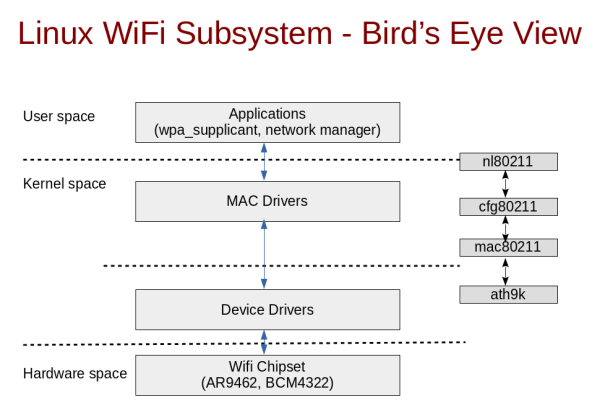Linux Kernel : cfg80211
cfg80211 subsystem

cfg80211
Introduction
Device registration
Details
In order for a driver to use cfg80211, it must register the hardware device with cfg80211. This happens through a number of hardware capability structs described below. The fundamental structure for each device is the ‘wiphy’, of which each instance describes a physical wireless device connected to the system. Each such wiphy can have zero, one, or many virtual interfaces associated with it, which need to be identified as such by pointing the network interface’s ieee80211_ptr pointer to a struct wireless_dev which further describes the wireless part of the interface, normally this struct is embedded in the network interface’s private data area. Drivers can optionally allow creating or destroying virtual interfaces on the fly, but without at least one or the ability to create some the wireless device isn’t useful. Each wiphy structure contains device capability information, and also has a pointer to the various operations the driver offers. The definitions and structures here describe these capabilities in detail.